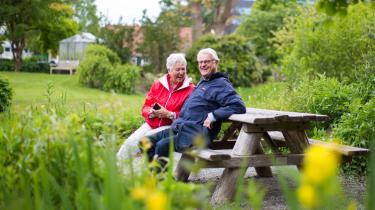Resilience explored
Insights from science and experiences of residents combined
Summary
Resilience is critical to health and well-being. Resilience has received extra attention in light of the COVID pandemic. This chapter explores the concept of resilience using literature and qualitative research among residents. In addition professionals and experience experts were consulted. Combining these perspectives, we arrive at the following description of resilience:
The process of adjusting to or coping with significant sources of stress or trauma, also known as challenges. The desired outcome of resilience is maintaining health/well-being, or better health/well-being than expected given the adversity experienced. Resources of the individual and in the environment make it easier to adjust and bounce back from adversity. Over the life course, resilience varies.
- Windle et al. (2011) edited and translated
Whether and how people can be resilient is the outcome of a complex and dynamic process. Resources, both of the individual and in the environment, play an important role. Resources are the capabilities people have in dealing with challenges.
Interviews with Utrechters reveal four elements important to resilience. It helps if:
- resources of the individual are available and employable,
- resources in the environment are available, accessible, flexible and proactive,
- residents can draw on previous life experiences and
- accumulation of challenges is avoided.
These elements are also found in scientific literature and recognised in conversations with professionals and experience experts. This chapter establishes a broad approach to resilience, as the impetus for further dialogue in the city. To inspire each other and come up with tools for practice and policy.
Invitation to conversation and action
Resilience is a complex and multifaceted concept. Research on resilience is also still developing. The interviews with residents revealed four elements that help with resilience. Elements that we see in scientific literature and recognise in conversations with professionals and experiencers. This chapter establishes a broad approach to resilience, as the impetus for further dialogue in the city. To inspire each other, create awareness and come up with tools for practice and policy.
Broad approach
A topic of discussion may be the broad approach to the concept of resilience. It involves not only mental aspects, but also physical, social and economic aspects. Focusing only on mental aspects, as is often done, has as consequence that too much focus is put on the individual and other important aspects that also contribute to a person's potential for resilience are missed. Such as having sufficient income or social support. There is also the danger of placing too much responsibility for resilience on the individual, whereas this research shows that resilience is not an individual trait, but comes about in interaction with the environment.
Role of the environment
The conversation can also turn to the role of the environment in resilience. In our study, we saw that the environment complicates the process of resilience when resources are not available, accessible or appropriate. Sometimes resources are present but cannot be utilised by residents because they require certain skills. We also saw that the more difficult the situation became for people, the more they fell back on resources in the environment. On the one hand, there is a clear task for society to ensure that resources are available, accessible, flexible and, if necessary, proactive. On the other hand, residents should be given the opportunity to increase their knowledge and skills. Society itself also benefits from performing this task, as resilient residents contribute to a resilient community and society.
Accumulation of challenges and stress
Avoiding stacking of challenges is also something to talk through, as is the role of stress in the process of resilience. The results of the qualitative research show that residents are better able to cope with challenges if they are not already facing many other (major or long-term) challenges in their lives. Once challenges pile up, a great deal of stress can arise. When stressed, a variety of skills, such as being able to take action and stick to an intention, come under pressure (WRR, 2017). It is then especially important for professionals to work stress-sensitively and avoid accumulation of challenges, whenever possible. This can be done, for example, by identifying challenges in time and by not creating additional barriers for residents in stressful situations. With (persistent) accumulation of challenges, it is important to see how space to be resilient can be restored in a person's life. Here, customisation is essential.
Continued
Finally, this is not the end of resilience research. Resilience is not yet measured within the Utrecht municipality, nor is it easy to measure. We will further investigate the measurability of the definition of resilience, for example in questionnaire research among Utrechters. In addition, we will delve more deeply into community resilience in relation to resident health and resilience.
